(815 products available)






















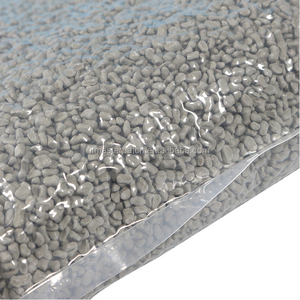




















































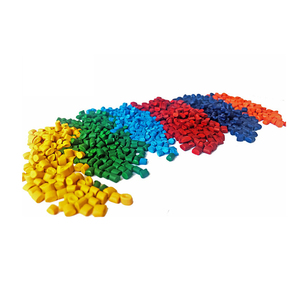
























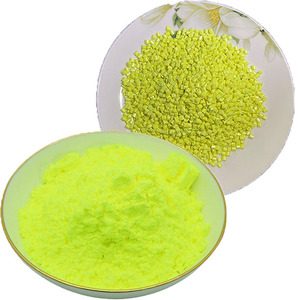





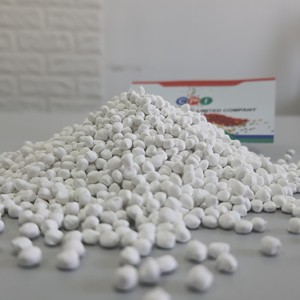









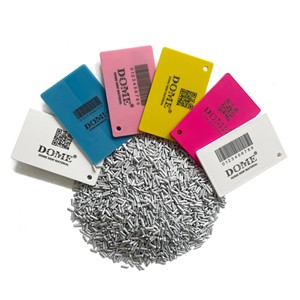




































Masterbatch with msds is a type of additive commonly used in the plastics and rubber industry and especially in the manufacturing setup. It is also essential for adding specific properties such as color, strength, and chemical resistance to the final material at the production site.
Typically, masterbatches are solid or liquid concentrates, and they come in various types based on their composition and the properties they impart to the base polymer used in the production. Below are several common types of masterbatches found in the industry today:
Color Masterbatch
Color masterbatches are probably the most common type of masterbatch as they are effective at adding shades and hues to the final plastic product. They come in various colors and are made with pigments that are more concentrated for better color illumination. They are widely used in the packaging, textile, and automotive plastic manufacturing sectors where color aesthetics and uniformity are critical.
Additive Masterbatches
Additive masterbatches are useful because they add specific features to the base polymer. These features may include UV resistance, anti-static, antibacterial, and other features that help improve the mechanical and thermal stability of plastics. They commonly find applications in diverse industries such as packaging and electronics where such properties are desirable.
Black Masterbatch
The black masterbatch consists of carbon black as the main element to provide UV protection and achieve desired dark shades on materials. Carbon black also serves as an impurity that improves the strength and durability of colored plastics. Black masterbatch is predominantly used by manufacturers in outdoor products, pipes, and construction materials where UV protection and effective coloration are needed.
White Masterbatch
White masterbatch, on the other hand, uses titanium dioxide as the main pigment to provide whiteness and opacity to plastic products. It is often used in packaging films, wall paints, and household products to improve brightness, opacity, and thermal properties.
Glow-in-the-dark Masterbatch
As the name suggests, glow-in-the-dark masterbatches incorporate phosphors that allow them to 'charge' and eventually 'discharge' light in the dark after some time. This property makes them suitable for emergency signs, toys, and novelty items in certain applications.
Masterbatch embeds materials in a solid or liquid state that are blended with polymers to form a homogeneous mixture during production. In the plastics and rubber industry, MSDS masterbatches are often employed to add color, strength, and chemical resistance.
However, beyond function, masterbatches have certain characteristics that define them. Here are some key features of masterbatches:
Concentration and Composition
Masterbatches typically comprise about 30-70% of the additive or pigment and the rest polymer carrier. The concentration of the active material in the masterbatch will determine its efficacy, while the choice of carrier polymer ensures compatibility with the base resin to be used at the manufacturing plant.
Dispersion Quality
The pigments contained in the masterbatch are usually heterogeneous in size and shape. This is known as dispersion quality. Good quality dispersion means that the pigments aggregate particles are not too large or too small and that they are well distributed throughout the polymer matrix at the production factory. Poor dispersion can cause inconsistent coloring or ineffective property enhancement in the final plastic product.
Compatibility
There are different types of pigments used in masterbatches, and each one is for a specific type of plastic. For instance, inorganic pigments work better for high-temperature plastics. At the same time, organic pigments offer a broader range of colors and are effective even at low concentration.
Stability
Most pigments may degrade over time and especially when subjected to UV radiation or extreme temperatures. But in masterbatches, these pigments are encapsulated in a way that protects them from these external aggressors and thus ensuring their longevity and effectiveness. The stability of a masterbatch also ensures that its properties are consistently transferred to the final product even when manufactured in large batches.
Ease of Processing
Masterbatches are typically designed to be easily incorporated into manufacturing processes. They have a viscosity and a flow rate that are optimal for the blending process. Also, masterbatches are in pellet form to allow easy storage, handling, and feeding into production equipment like extruders and injection molding machines.
Masterbathe in rubber and plastic manufacturing is an additive that comes in either liquid or solid form and is used to make the production process easier and more efficient. The choice of masterbatch to use will depend largely on the type of materials being processed, the desired end product, and the production methods available.
There are several factors that business owners need to consider when choosing the right masterbatch rubber for their clients:
Material Compatibility
Typically, different types of masterbatches are made for specific types of plastics like polyethylene and polypropylene. Each type is compatible with a specific material. There are those made for blending with more than one type of plastic, while others are particular.
Desired Properties
Masterbatches can do more than just add color to the production process. Some reinforce production, others improve stability and even antibacterial properties. Business owners need to stock up on masterbatches that will give their customers the desired effect on the production they intend to achieve.
Concentration Levels
Different types of masterbatches have varying pigment or additive concentrations. These concentrations can be low, average, or high. Business owners must select those with different concentration levels to allow manufacturers to finely tune the blending to their desired needs.
Quality and Consistency
The quality of masterbatches significantly affects the final product of the rubber and plastics. It enhances aesthetic value, improves performance, and increases durability. Manufacturers will often select those providing quality masterbatches with consistent dispersion and a high-quality additive that produces consistent results.
Supplier Reliability
Choose a reputable supplier who offers quality and consistent products. Make sure the supplier has a proven track record of providing quality customer service and that their lead times, MOQ, and masterbatch stocks will not adversely affect business operations.
Preparation
The first step in the use of masterbatch plastic products.md involves gathering the necessary materials. These include the base resin or polymer, the MSDS masterbatch additive, processing equipment like extruders or injection molding machines, and protective gear when necessary.
Blending
In blending, the MSDS masterbatch is mixed with the base resin in varying proportions. This depends on the desired potency level. Manufacturers do this either manually or using automated feeders that provide precise measurements for efficiency. The mixture must be uniform. So they are often pre-mixed in a separate container before being added to the processing equipment.
Loading
The blended mixture of masterbatch and resin is then loaded into the processing equipment that manufacturers are using. The feeding mechanism of the processing equipment should be properly calibrated to ensure that the right amounts of both the masterbatch and resin are fed into the system. This ensures proper mixing and consistency in the final plastic product.
Processing
The next step involves operating the processing equipment. It is important that the equipment is operated under the right conditions. Since the ideal temperature and mixing speed will depend largely on the type of polymer and masterbatch blend used, manufacturers are advised to check the literature provided by the manufacturer of the masterbatch for guidance.
Monitoring
Close supervision of the production process helps ensure the desired outcome. This can be done by adjusting the blending ratios and processing conditions to achieve the desired results. Checking for consistency in color pattern and texture can help indicate whether the right amounts of materials were blended or not.
Maintenance
Proper maintenance of the equipment used to process masterbatches is critical. It ensures efficiency in production and the quality of the final product. Therefore, regular cleaning of the machinery after use and periodic checkups to ensure the machinery is in pristine condition are some helpful tips.
There are Masterbatches made for every type of plastic. Some are for specific types, while others are more compatible with various material types. Therefore, it is necessary to select those compatible with the base resin for the processed product.
A good rule of thumb is to follow the manufacturer's instructions supplied with the product. Here, the recommended usage rates are outlined. Also, it is important to note that the nature of the base resin and the required properties of the final product influence the amount to use.
Additive masterbatches may contain a variety of substances, mainly stabilizers, antioxidants, anti-block agents, and even UV and antimicrobial inhibitors. These additives are great for improving the mechanical and thermal properties of plastics and boosting their shelf life.
Masterbatches must be stored in cool, dry places and away from direct sunlight. The storage area should be free of moisture in order to prevent clumping and pigment degradation. The temperature should be constant around room temperature. Frequent temperature fluctuations cause condensation and may affect the quality of the masterbatch.